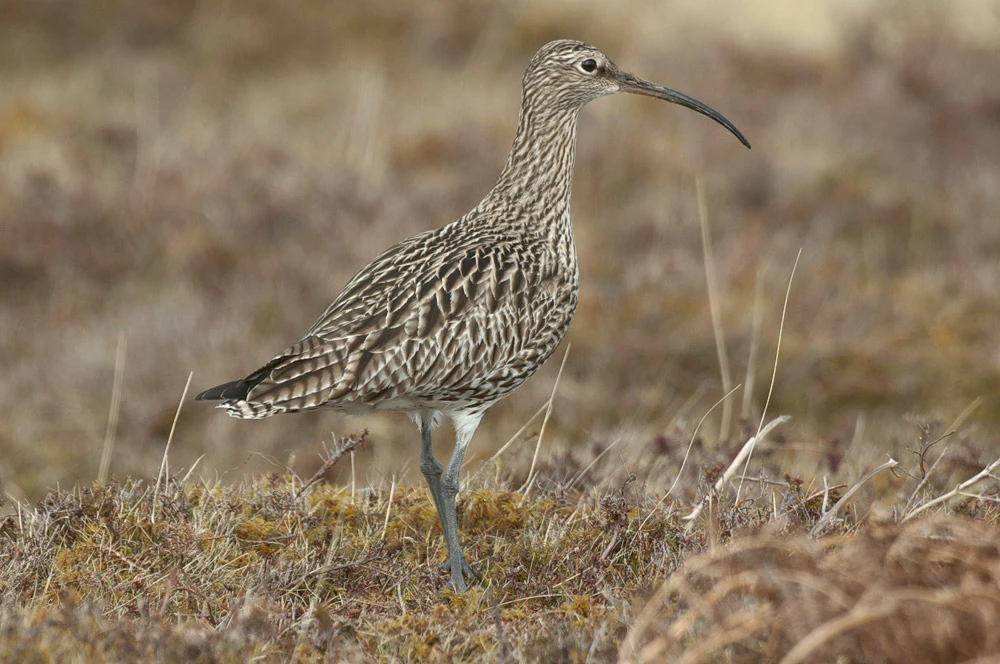
Partner Article
The Northern Upland Chain Local Nature Partnership campaign to highlight decline of the Curlew
The Northern Upland Chain Local Nature Partnership (NUCLNP) is supporting a campaign led by the RSPB to highlight the decline of the Curlew.
The Northern Upland Chain Local Nature Partnership encompasses the Protected Landscapes of Northumberland National Park, North Pennines AONB, Yorkshire Dales National Park, Nidderdale AONB and the Forest of Bowland AONB.
It also includes the extensive National Nature Reserves of Kielderhead and Whitelee Moor as well as Kielder Forest and Water, and the ‘Tyne gap’ between the North Pennines AONB and Northumberland National Park.
The curlew, the iconic large wading bird with a down-curved bill, has experienced a decline in the number of breeding pairs across the UK by nearly half since the mid-1990s.
It is thought the main reason for its decline is poor breeding success caused by the loss of damp, rough, grassy habitats where curlews like to nest, as well as predators including foxes and crows. It is important to note that curlew abundance and breeding success across the Northern Upland Chain area is correlated with grouse moor predator control.
The UK is home to around a quarter of the world’s breeding curlew population and the RSPB aims to raise public awareness of the potential disappearance of this much-loved bird from its historic breeding areas through Curlew Crisis month during May.
David Hill, Chair of the Local Nature Partnership, explains: “Since numbers have declined all over the country many people are trying to work out the best ways of helping curlews. Groups such as the RSPB and the British Trust for Ornithology (BTO) are carrying out research.
“In recent years Protected Landscape bodies have been carrying out surveys to determine where curlews nest. At present they are found across open areas away from steep hillsides, woodlands and forestry plantations. Across the NUCLNP area the Protected Landscape bodies are working with landowners to improve habitat management for curlew and other waders as well as developing a programme of measures to improve the conservation prospects for curlew and other breeding waders.”
“We are hoping to undertake further research next year which may involve looking at egg and chick survival at key locations in the Protected Landscapes. Raising public awareness of the Curlew’s decline through initiatives like RSPB’s Curlew Crisis Month helps to spread the word and encourage organisations and individuals to learn about this iconic bird and what we can do to protect it.”
The public can help by recording where they see curlews on the ERIC website at: http://www.ericnortheast.org.uk/wildlife/. Birdwatchers in Yorkshire are being asked to submit their records to BirdTrack https://app.bto.org/birdtrack/main/data-home.jsp.
This was posted in Bdaily's Members' News section by Fusion PR .
Enjoy the read? Get Bdaily delivered.
Sign up to receive our daily bulletin, sent to your inbox, for free.






 A legacy in stone and spirit
A legacy in stone and spirit
 Shaping the future: Your guide to planning reforms
Shaping the future: Your guide to planning reforms
 The future direction of expert witness services
The future direction of expert witness services
 Getting people into gear for a workplace return
Getting people into gear for a workplace return
 What to expect in the Spring Statement
What to expect in the Spring Statement
 Sunderland leading way in UK office supply market
Sunderland leading way in UK office supply market
 Key construction developments in 2025
Key construction developments in 2025
 Mediation must be part of planning process
Mediation must be part of planning process
 From apprentice to chief financial officer
From apprentice to chief financial officer
 Don't stifle growth with apprenticeship cuts
Don't stifle growth with apprenticeship cuts
 The start-up landscape: What lies ahead in 2025
The start-up landscape: What lies ahead in 2025
 JATCO adds welcome drive to automotive sector
JATCO adds welcome drive to automotive sector